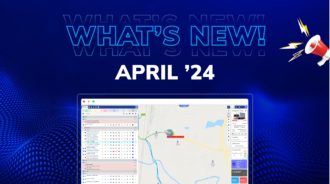In today’s fast-paced logistics and supply chain industry, efficiency and real-time monitoring are paramount. Trailer asset tracking, a revolutionary technology, stands at the forefront of transforming how businesses manage their fleet and deliveries. This article delves into the pivotal role of trailer asset tracking in boosting supply chain efficiency.
What is Trailer Asset Tracking?
Trailer asset tracking involves using GPS and other technologies to monitor the location and status of trailers in real time. This practice allows companies to gain unparalleled insights into their fleet operations, enhancing decision-making and operational efficiency.
Benefits of Asset Tracking in Supply Chain
Enhanced Visibility and Monitoring
One of the primary advantages of trailer asset tracking is the significantly improved visibility it provides. With real-time tracking, companies can monitor the exact location of their trailers. This aspect is crucial for optimizing routes, ensuring timely deliveries, and enhancing customer satisfaction. Knowing the whereabouts of assets at all times also aids in quick decision-making, especially in dynamic situations.
Improved Asset Utilization
Trailer asset tracking helps in maximizing the usage of trailers. By understanding the usage patterns and locations, companies can efficiently allocate their trailers where they are needed most. This optimization reduces idle time and increases the productivity of each asset, thereby maximizing the return on investment.
Enhanced Security and Theft Prevention
Security is a major concern in the supply chain, and trailer asset tracking offers a robust solution. Tracking systems significantly reduce the risk of theft. They trigger alerts in the event of unauthorized movement or breach, enabling a quick response to prevent loss. This feature not only secures assets but also ensures the safety of the cargo, which is essential for maintaining trust with clients.
Better Maintenance and Upkeep
Regular maintenance is vital for the longevity and performance of trailers. Trailer asset tracking systems can have features that monitor the condition of the trailers, alerting managers to any maintenance or repair needs. This proactive approach prevents breakdowns and prolongs the lifespan of the assets, ensuring they remain in top condition.
Streamlined Operations and Cost Savings
By leveraging trailer asset tracking, companies can streamline their operations. Efficient route planning, quick turnaround times, and reduced manual labor all contribute to cost savings. Additionally, analyzing the data collected through tracking can identify further areas of improvement, leading to the continuous optimization of the supply chain.
Compliance and Reporting
Trailer asset tracking systems assist in maintaining compliance with regulations. With accurate tracking and logging of routes, times, and operations, companies can easily generate reports required for regulatory purposes. This feature simplifies compliance management, saving time and resources.
Points to keep in mind while Implementing
Understanding the Purpose
First and foremost, it’s essential to understand why you’re implementing trailer asset tracking. This technology aids in real-time location tracking, improves asset utilization, and enhances theft prevention. Clarifying your goals will guide your choice of system and features.
Choosing the Right Technology
There are various tracking technologies available, such as GPS, RFID, and IoT-based solutions. Each comes with its own set of benefits and limitations. GPS, for example, provides real-time tracking data but might require a significant power source. RFID is great for proximity-based tracking but has a limited range. Consider what technology aligns best with your needs.
Installation and Integration
Proper installation is crucial. The tracking devices should be installed in a way that ensures accurate data transmission and minimizes the risk of damage or tampering. Additionally, the system should seamlessly integrate with your existing fleet management software for efficient data analysis and decision-making.
Training and Usage
Ensure your team is adequately trained to use the trailer asset tracking. They should understand how to interpret the data and respond to various alerts. Proper training not only maximizes the benefits of the system but also helps in identifying potential issues early on.
Data Management and Security
The tracking system will generate a significant amount of data. It’s vital to have a robust data management system in place. Ensure that the data is stored securely and is easily accessible for analysis. Pay special attention to data privacy laws and ensure compliance.
Maintenance and Support
Regular maintenance of the tracking devices is essential for accurate tracking. Choose a provider that offers reliable customer support and maintenance services. This ensures any issues are promptly addressed, and the system remains operational.
Cost-Benefit Analysis
Finally, conduct a thorough cost-benefit analysis. While the initial investment might seem significant, the long-term benefits like improved asset utilization, reduced theft, and enhanced operational efficiency often justify the cost.
Conclusion:
Moreover, Trailer asset tracking is a game-changer in the logistics and supply chain industry. It not only enhances the efficiency of trailer utilization but also improves overall operational effectiveness. Implementing this technology can lead to significant cost savings, better customer service, and a more resilient supply chain.



